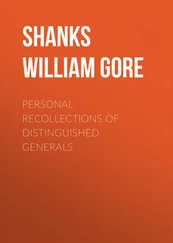From May 1943, special reports were introduced on German Staff officers: 1,302 protocols coded ‘SRGG’ [34] TNA WO 208/4165–70.
and 326 comprehensive reports of a general nature coded ‘GRGG’. [35] TNA WO 208/4363–66, 77, 78.
The latter documented all pertinent information over two- to five-day periods. A synopsis of monitored and recorded conversations was included with any other data which the British intelligence officer beyond the range of the microphones had picked up through listening to discussions or from his own talks with prisoners. To these must be added the recorded conversations coded ‘SRM’ between von Thoma and Crüwell prior to May 1943 filed amongst the Army protocols [36] TNA WO 208/4136.
together with protocols coded ‘SRX’ [37] TNA WO 208/4161–63.
of their conversations with Luftwaffe and Kriegsmarine officers. The generals’ protocols run to about 10,000 pages, approximately 20 per cent of the total inventory of the monitored protocols of German prisoners. [38] GRGG 243, TNA WO 208/4363 is recommended as an index for all SRGG and GRGG papers to 31.12.1944. ‘The Generals – Views of German Senior Officer PoWs’, TNA WO 208/5550 is a 12-page synopsis of the 1943 conversations.
CSDIC (UK) decided against interrogating von Thoma and Crüwell, believing that the men were not in a frame of mind to divulge information. Instead, immediately after their arrival in England, they were brought to Trent Park in order that their conversations could be eavesdropped. Initially a German ‘stool pigeon’ was used ‘very successfully’ as a prompt [39] The identity of this person is not known. In the protocols under identity code A713, the informer is an Oberleutnant Krause, alias von Waldeck, allegedly ‘shot down in his Fw190 on 2.9.1942’. In June 1943 prisoner A713 was now a Hauptmann ‘shot down in his Ju88 on 1.6.1943’. These men were the same person. See SRX 1140, 8.10.1942, WO 208/4161 and SRX 1799, 23.6.1943, TNA WO 208/4163.
after which an even better strategy was found in having Lord Aberfeldy [40] The true identity of ‘Lord Aberfeldy’ is unknown. He is not listed in ‘Burke’s Peerage’. Theodor Graf von Sponeck stated that before the war the British officer lived in Düsseldorf and lost a leg at Dunkirk. Sponeck, ‘Meine Erinnerungen’, p. 143.
live in the camp with the generals from December 1942. He acted as interpreter and his role was ostensibly to see to the comforts and wishes of the prisoners, accompanying them on long walks, making purchases on their behalf in London and always being on hand as a generally valued conversational partner. Very soon he had gained the trust of most prisoners, none of whom suspected that he might be anything other than a ‘welfare officer’. In reality, Aberfeldy worked for MI19, his job being to steer conversations along the lines desired by British Intelligence. A protocol (Document 147) of a conversation immediately after 20 July 1944 demonstrates that the German generals were not inhibited by his presence, a fact which enabled him to gather important information beyond the range of the microphones. A similar ‘trusted man’ had also inveigled himself with the Italians. [41] CSDIC (UK), S.8, TNA WO 208/4136.
Some of the generals captured in Tunisia were questioned before being brought to Trent Park. Confronting them with the usual system of intelligence gathering, it was hoped that they would discount the possibility of secret microphones at Trent Park – a hope fully realised. A number of generals did answer questions under direct interrogation, especially shortly before the war’s end. All generals captured from the summer of 1944 onwards were held for a few days at Wilton Park, or exceptionally Latimer House, before being transferred en bloc to Trent Park.
At Trent Park 12 rooms were bugged including the common room. Latimer House and Wilton Park each had 30 bugged rooms and six interrogation rooms equipped with microphones. At the earphones were mainly German and Austrian exiles. [42] At the beginning of 1943, CSDIC (UK) employed 101 foreign nationals. TNA WO 208/3451.
As soon as something important was said a gramophone recording was started. A recording would last seven minutes. A long, interesting conversation would therefore be ‘apportioned’ over several records. Thus for example the first conversation between generals Crüwell and von Thoma on the evening of 20 November 1942 was documented in 27 parts. [43] SRM 70 to SRM 96, TNA WO 208/4136.
From these records a protocol in German language was prepared. The average consolidated recording lasted 90 minutes although some were substantially longer. The most experienced member of the monitoring team would then read through the transcript and hear the record again where a part of the text was doubtful. Ambiguous words or passages of text would be indicated by editorial marks. Following the translation of the protocol into English the manuscript would be sent to MI19 at the War Office and the intelligence departments of the Admiralty and Air Ministry. After two months the records would be returned to the Post Office research unit for erasure but recordings of special interest, mainly in respect of war crimes, were kept.
The interrogation centre had begun with a modest staff of specially trained monitoring officers who worked in the so-called M-Room. When Trent Park began work in December 1939, a staff of six listened-in to conversations. With the increase to three camps, and these were occasionally bursting at the seams, the M-Room staffing levels expanded and by 1944 had risen to a complement of 100. It was no easy matter to find qualified operatives. British people, even those with very good German language skills, were unsuited to the work, and even many persons with German as their mother tongue failed to meet requirements. To resolve this problem it was decided at the end of 1942 to employ exclusively German and Austrian exiles for the task. A three-month training period was found necessary to familiarise candidates with military vernacular and to help them develop a feeling for conversations which ought to be recorded. [44] CSDIC (UK) especially Appendix E, ‘M-Room’, TNA WO 208/4970.
Only political and military matters were considered relevant. Talk about the weather and the food, or intimate matters personal to the speaker, were not wanted.
Set amongst cow pastures, plough-land and ancient woods, Trent Park was a magnificent estate located in the low hills around Enfield, in the north of London. ‘Great lawns with marble statues, glorious woodland with cedars and great oaks. A golf course, large swimming pool, a fine pond with wild duck’, was how detainee Generalleutnant Erwin Menny described the centre in his diaries. [45] Menny, BA/MA N267/4.
The history of Trent Park can be traced back to the reign of Henry IV. In 1399 the king converted a huge park-like area of Enfield into a game reserve. In 1777 Sir Richard Jebb took over a part of it and built on the property a small country house, which was greatly enlarged in 1893. In 1908 Sir Edward Sassoon, a descendant of wealthy Baghdad Jews, bought the estate. After his death in 1912 it passed to his son Sir Philipp Sassoon (1888–1939). [46] In World War I, he was private secretary to Field-Marshall Douglas Haig; he later became an MP and served 1924–37 as Under-Secretary of State for Aviation in the Ministry of Transport. See Stansky, ‘Sassoon’.
A doyen of London society, there was nobody of rank or influence in Great Britain who had not been invited to one or other of his country houses. Members of the royal family and Winston Churchill numbered amongst the pre-war guests at Trent Park. When Philipp Sassoon died unexpectedly in 1939, Trent Park could be used by the government. [47] From 1947 Trent Park was an Arts Training College under the Ministry of Education. After 1974 it formed part of the Middlesex Polytechnic, since 1992 a university.
Читать дальше
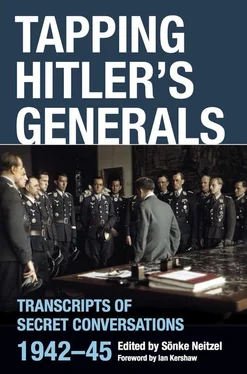
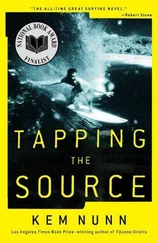
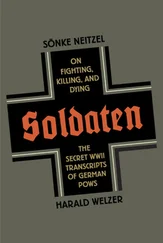
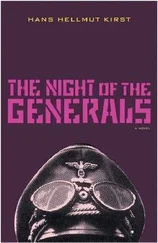
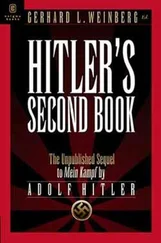
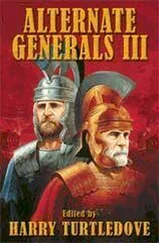
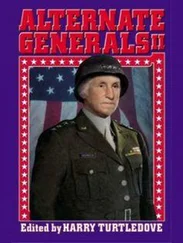

![Traudl Junge - Hitler's Last Secretary - A Firsthand Account of Life with Hitler [aka Until the Final Hour]](/books/416681/traudl-junge-hitler-s-last-secretary-a-firsthand-thumb.webp)



